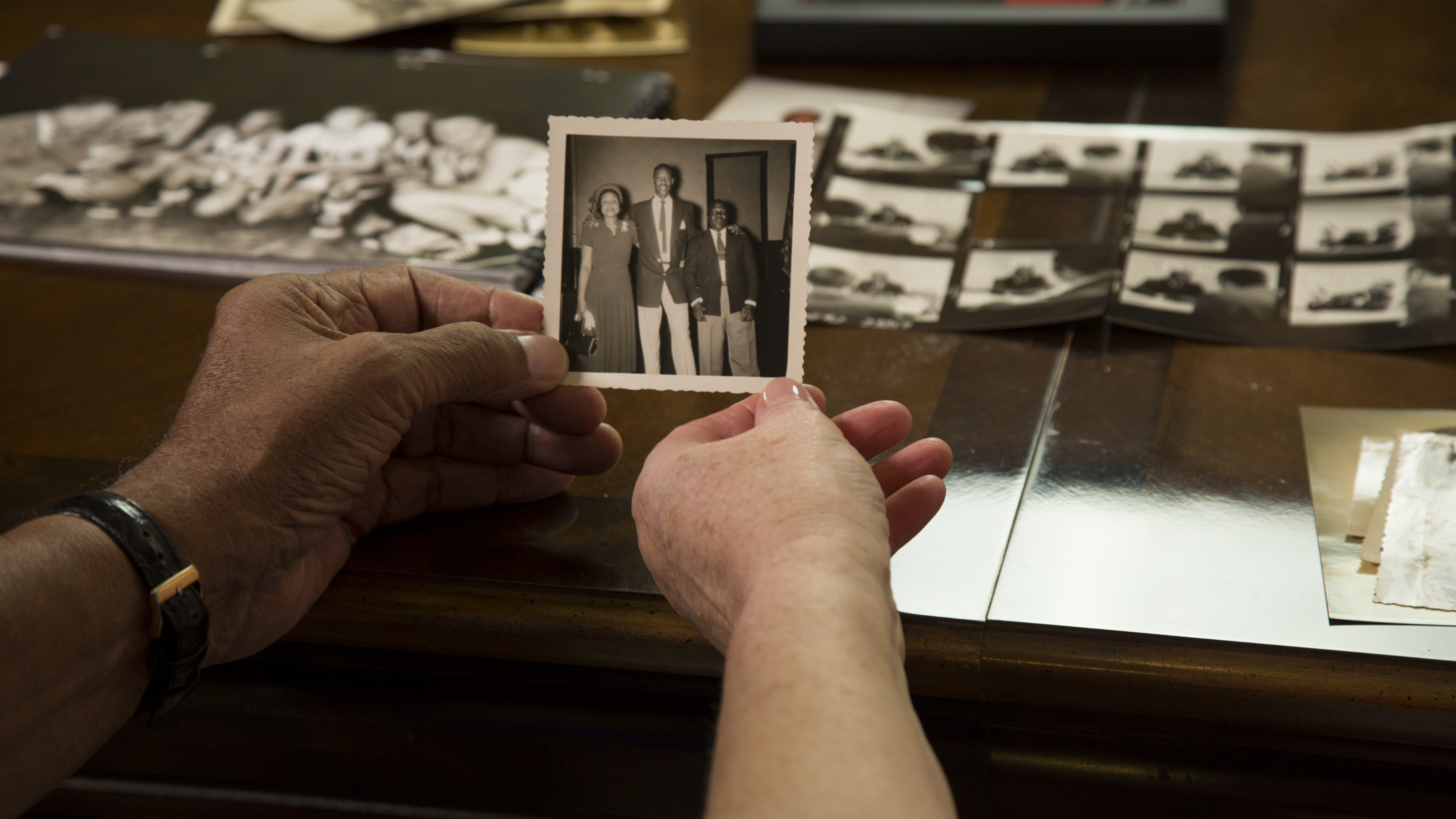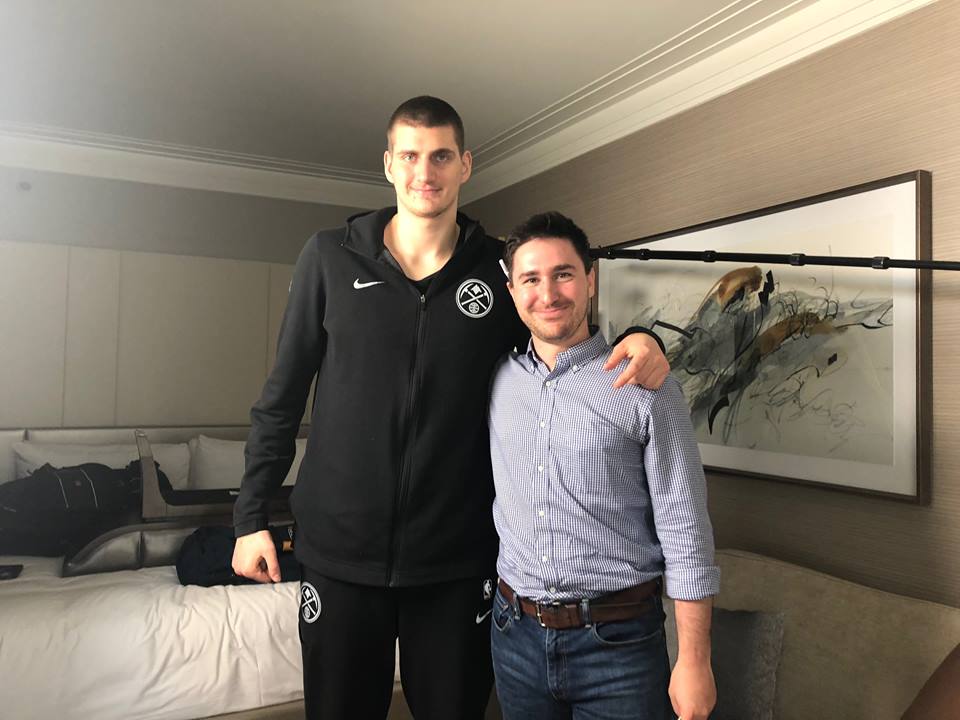© 2024 ALLCITY Network Inc.
All rights reserved.

On a chilly February Milwaukee evening last year, Nikola Jokic made NBA history. In a 134-123 Nuggets win, Jokic recorded the fastest triple-double in league history in just 14 minutes and 33 seconds, smashing Jim Tucker’s record of 17 minutes, which had stood since 1955.
You probably know a little bit about Jokic, the Nuggets’ star center who was just selected to his first All-Star game earlier this month and has cemented himself as one of the top big men in the league. But you’re probably not too familiar with Tucker, the 6-foot-7 backup forward who averaged 4.1 points and 3.5 rebounds for the Syracuse Nationals in the 1950s and held the elusive record for more than 60 years.
Director Field Humphrey is here to share Tucker’s story. Humphrey and producers Ben Altenberg and Patrick Newman’s short-form documentary, entitled “Let ‘Em Know You’re There,” tells the story of Tucker’s improbable place in NBA history, his record triple-double and his recent battle with Alzheimer’s. The documentary also features an interview with Jokic.
Humphrey spoke with BSN Denver about the film, Tucker’s life and the legacy he left on the game.
(This interview has been lightly edited and condensed for clarity.)
BSN Denver: How did this project come about?
Humphrey: Myself and Patrick worked on ESPN’s “30 For 30” documentary series. Patrick did some producing for “Brian and The Boz” and “Phi Slama Jama,” and I did some producing and was the editor for “Phi Slama Jama.” We went out to start our own company, and we wanted our first project to be something that really resonated and meant something to us. My good friend from back home is actually Jim’s grandson, and so he told me about Jim and all of the crazy history wrapped around his triple-double and him being a pioneer in the NBA. So we started discussing it, and we met Sean Kirst, who’s a journalist and actually covered the Nats up in Syracuse and we started to get all of these anecdotes about that era. For example, people would smoke cigars in the stadium to get George Mikan’s asthma to flair up. We heard about the shot clock, how the Nationals won the championship in the first season where it was implemented.
Then we ended up meeting Jim and his wife, Jan, and were just blown away with them as people. It was really powerful sitting and talking with them and seeing her go over old photos, which is something she does every day with Jim to remind him of the good memories that he’s had. After meeting and talking with everyone it seemed like a no brainer. So we started filming and digging up archives, which was really crazy. We unearthed some 1950’s NBA footage that no one’s ever seen before. It was a wild journey.

BSN: Does any footage of the game where Jim broke the record exist, and does he have any memories of his playing days?
Humphrey: We did find some old footage of them playing the Knicks but not a lot of footage of Jim playing. He was a reserve, which makes the record even that much crazier. He was a rookie backup that didn’t get a lot of playing time. But he doesn’t remember much of his playing days. It’s always new and fresh to him, like whenever Russell Westbrook kept coming close to breaking it, Jim and Jan would always get phone calls from journalists asking for a quote, and Jan even discusses it in the documentary. She’s like, “He had no idea. I had no idea. Who knew?” It speaks to the humble nature of Jim. Even when he did have all of his memories of his basketball accolades, he never really talked about it that much. He actually ended up being an extremely successful businessman who went to Harvard business school.
He had no idea the record he has, but emotion really plays into his memories. He can’t really remember particulars, but he has positive emotions for certain situations. When he was watching video of his old playing days that we showed him, or when we were showing him old photos, he was like, “I can’t really remember it but I can feel that there’s a good memory there.” It was really powerful.
BSN: Why is the documentary entitled “Let ‘Em Know You’re There”?
Humphrey: We were interviewing Jim, and some of the main things that we wanted to center the film around were legacy, memory and time and just how you impact someone’s life when you pass through it. Jim remembers all of these sayings that his mother used to have, but he can’t even remember what he said five minutes ago. He remembered one of her quotes. It was, “Never walk into someone’s life and not leave a memory. Let them know that you were there.” That really resonated with us. Jim went through all of these people’s lives, touched all them and had such an enormous impact on all of them, which we explained in the film. Essentially, he let them know that he was there. It’s just a saying that his mom had and it really resonated with him and kind of fit in with the theme of the film.
BSN: What did Nikola think of Jim’s story?
Humphrey: We got to talk to Nikola about that era and the impact Jim had on the game. Part of the film is Jim, his wife and his caretaker going through old memories, and he has no recollection of it at all with his Alzheimer’s. His record wasn’t a big deal back then, too. But what he does remember is his best friends from the team and stuff his mom said to him. The kind of stuff that resonates. We shot that back to Nikola, and he was saying how he hopes that those are the same things he remembers most when he’s older. He said he hopes that he remembers all of the good stuff. He was talking about how much he loves his brothers and his girlfriend. So it was cool talking to him about that the different era that Jim played in and he came away from it respecting Jim as a pioneer and him as the first African-American to win an NBA championship.

BSN: You mention how Jim’s team helped to revolutionize the game with the shot clock but also faded from memory with the rise and eventual fall of small market teams in the NBA. What else did you learn about what the league and playing professional basketball was like back then from Jim’s story?
Humphrey: Syracuse, like many towns in the country at that time, was very segregated, so even pro athletes like Jim and his mentor Earl Lloyd, who was one of the first African-Americans to play in the NBA, they couldn’t even rent a room and when they could, they could only rent rooms in one section of town. It was very difficult for them. But they had teammates that didn’t put up with that, really respected them and treated them with dignity. Their owner, Danny Biasone, felt the same way. I think Jim landed in the correct city and the correct team. It was a very nurturing environment, and they took him in and treated him well. Syracuse was a huge industrial hub. It was doing extremely well at the time in the 1950s. It was a business destination. Upstate was thriving, and there were all these small town NBA teams. Rochester, New York, still had a team and Fort Wayne, Indiana, had a team, and these teams were doing well.
So Jim comes into the perfect situation in this town that’s kind of thriving that has this rich basketball history, but they could never get over the hump. George Mikan was always dominating. Right before Bill Russell and Wilt Chamberlain came into the league, and right after Mikan retired, they had this one year where they introduced the shot clock, and Jim’s team kind of capitalize on all those factors and won the championship. Then, right after that the ’50s wrap up all the small town teams leave. Syracuse ends up going to Philadelphia because Danny Biasone can’t keep the team in a small city for financial reasons. They were under a lot of pressure to win that year. It was in a small town era with a small town team with a superstar who was Dolph Schayes, who isn’t a household name, and they were able to capitalize during this one season. It was right at this huge turning point in the league.
Let ‘Em Know You’re There – 30 Second Spot from Readily Apparent Media on Vimeo.“
“Let ‘Em Know You’re There” airs on Rocky Mountain PBS Feb. 11 at 10:30 p.m. following the conclusion of the Nuggets and Heat game.
Humphrey and Newman are working with the Alzheimer’s Association. They hope their film helps to educate the public on the disease, how to get tested and help detect Alzheimer’s as early as possible.
The Alzheimer’s Association of Colorado is the premier source of information and support for Coloradans living with dementia and their families and caregivers. Through its statewide network of offices, the Alzheimer’s Association offers a broad range of programs and services, including a 24-hour Helpline, at no cost to families; funds advancements in research to prevent, treat and eventually conquer this disease; and advocates on behalf of Coloradans on related legislative issues, and with health and long-term care providers.
Reach the Colorado chapter at 303-813-1669 or their 24/7 Helpline at 800-272-3900.
Comments
Share your thoughts
Join the conversation



